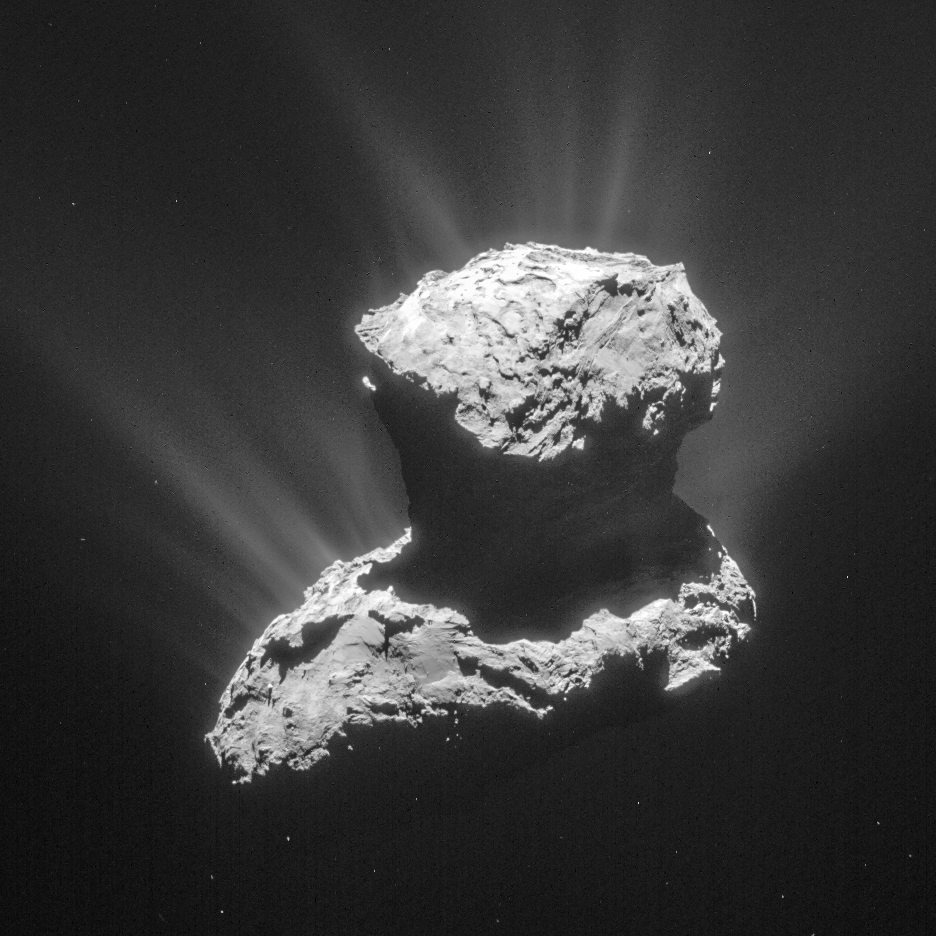With only a month left of the Rosetta mission, the ESA has finally located Philae on the Comet 67P/ChuryumovGerasimenko.
Images were taken on 2 September by Rosettas camera, as it came within 2.7 km of the comets surface, which clearly show the main body of the lander, along with two of its three legs, said the ESA.
Furthermore, the images also provide proof of Philaes orientation, making it clear why establishing communications was so difficult following its landing on 12 November 2014, added the ESA.
pv magazine had extensively covered Philaes landing on the Comets surface. Rosettas probe, Philae, which was powered by solar panels and a battery system, had been in operation for almost three days after landing on the comet, during which time it completed experiments and measurements that provided an unprecedented mass of data to the ESA scientists.
However, Philaes rough landing on the comet eventually led it into trouble, ending up in a dark location that was later named Abydos, on the comets smaller lobe. Philaes primary battery was exhausted and the lander went into hibernation.
Scientists had hoped that Philae would awake from its hibernation in the summer of 2015, when the 67P Comet would reach its closest to the Sun, at about 186 million kilometers away (67P orbits the Sun once every 6.6 years). Indeed, Philaes PV system powered up when this last happened in June and July last year.
The precise location in which Philae went into hibernation was not known until yesterday, when the ESA team downlinked the images from Rosetta. Radio ranging data had helped the scientists to tie Philaes location down to an area spanning a few meters squared, but Rosettas proximity to the comet did not allow it to take clear pictures and identify its precise location.
Rosettas PV wonder
After losing contact with its probe, Rosetta started orbiting the comet 67P and at times it flew a series of flybys past the comet just a few kilometers away from it.
“Now that the lander search is finished we feel ready for Rosetta's landing, and look forward to capturing even closer images of Rosetta's touchdown site, said Holger Sierks, principal investigator at the ESA team.
On 30 September, Rosetta will descend on a final one-way mission to investigate the comet from up close, while collecting more data regarding the comets interior structure.
In the last two years, and in the ten years that it took Rosetta to reach the Comet 67P before it launched its probe, the spaceship has been powered entirely by solar PV panels.
To reach the comet, Rosetta travelled 6.4 billion kilometers using power generated from its two 14-meter-long solar panels. During its journey to the comet it also had to be put into hibernation to help it save power and minimize mission costs.
Philae was the first probe to be powered by solar PV. All previous deep space probes used Radio-isotope Thermoelectric Generators (RTGs). However, the ESA has not developed RTG technology, so the agency decided to trust solar PV technology.
This wonderful news [the discovery of Philaes precise location] means that we now have the missing ground-truth information needed to put Philaes three days of science into proper context, now that we know where that ground actually is! said Matt Taylor, ESAs Rosetta project scientist.
The Rosetta spaceship and the Philae probe story should hopefully put into context the power of the solar cells. They can drive humans a great distance, be it on the earth or outside it.
This content is protected by copyright and may not be reused. If you want to cooperate with us and would like to reuse some of our content, please contact: editors@pv-magazine.com.


By submitting this form you agree to pv magazine using your data for the purposes of publishing your comment.
Your personal data will only be disclosed or otherwise transmitted to third parties for the purposes of spam filtering or if this is necessary for technical maintenance of the website. Any other transfer to third parties will not take place unless this is justified on the basis of applicable data protection regulations or if pv magazine is legally obliged to do so.
You may revoke this consent at any time with effect for the future, in which case your personal data will be deleted immediately. Otherwise, your data will be deleted if pv magazine has processed your request or the purpose of data storage is fulfilled.
Further information on data privacy can be found in our Data Protection Policy.